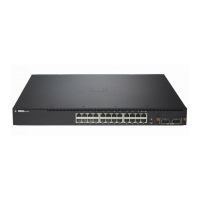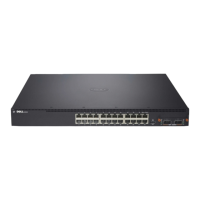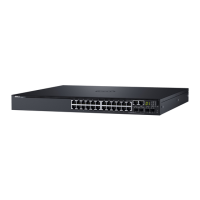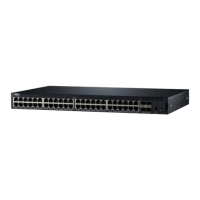58 Switch Features
Master Failover with Transparent Transition
The stacking feature supports a
standby
or backup unit that assumes the
stack master role if the stack master fails. As soon as a stack master failure is
detected, the standby unit initializes the control plane and enables all other
stack units with the current configuration. The standby unit maintains a
synchronized copy of the running configuration for the stack.
Nonstop Forwarding on the Stack
The Nonstop Forwarding (NSF) feature allows the forwarding plane of stack
units to continue to forward packets while the control and management
planes restart as a result of a power failure, hardware failure, or software fault
on the stack master and allows the standby switch to quickly takeover as the
master.
Hot Add/Delete and Firmware Synchronization
You can add and remove units to and from the stack without cycling the
power. When you add a unit, the Stack Firmware Synchronization feature
automatically synchronizes the firmware version with the version running on
the stack master. The synchronization operation may result in either an
upgrade or a downgrade of firmware on the mismatched stack member. In
addition, the running-config on the member is updated to match the master
switch. The startup-config on the standby and member switches is not
updated to match the master switch due to configuration changes on the
master switch. Saving the startup config on the master switch also saves it to
the startup config on all the other stack members.The hardware configuration
of every switch is updated to match the master switch (unit number, slot
configuration, stack member number, etc.).
Security Features
Configurable Access and Authentication Profiles
You can configure rules to limit access to the switch management interface
based on criteria such as access type and source IP address of the
management host. You can also require the user to be authenticated locally or
by an external server, such as a RADIUS server.
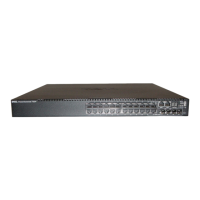
